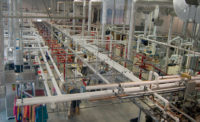Lessons Learned From the Fires: A CRDN Case Study

With every major catastrophe, the restoration industry gains greater insight on what is required to successfully respond and handle the needs of insurance companies and their insureds impacted by the event. While every situation presents its own set of variables due to the type of catastrophe and geographic location, there are certain key components that remain standard.



As a result, CRDN was able to efficiently handle more than 300 losses in the initial wave of response while maintaining standard service levels for response and service, including “rush” orders.
CRDN’s coordinated response and service capabilities were particularly exemplified by results with a national restoration company. Thorough and frequent communication between CRDN and executives with the disaster restoration business enabled CRDN to be brought in to assist with contents losses as part of a comprehensive team. The national DR company was able to provide a more systematic, detailed and complete solution to its insurance carrier clients. As with standard losses, CRDN was relied on to be on-site quickly to inventory and remove affected textiles so the restoration businesses could begin their work efficiently.

Similarly, local relationships between CRDN and California-based contractors/mitigation companies created a natural business scenario when those companies were tapped to serve homeowners, as there was confidence in CRDN’s processes and ability to perform in a standardized, familiar way.
CRDN’s advance preparation of necessary business licenses and proper documentation, along with the company’s professional appearance, enabled its representatives to gain access to the affected areas that were strictly controlled by authorities concerned about predatory service providers. Quite often when a CRDN van arrived at one house, neighbors were soon inquiring about assistance with their smoke-damaged clothing, as they weren’t aware that such a service was available or they had tried unsuccessfully to clean their own items.


This changing insurance landscape creates opportunities for restoration service providers who excel at meeting the distinct needs of adjusters and property owners. The increased specialization among contents restorers, such as with CRDN, provides a valuable solution for losses that involve garments and textiles. CRDN’s broad geographic footprint, covering 94 percent of the U.S., and approach to restoration as an emergency response business, enable the organization’s local business representatives to arrive on a loss site when clients expect service and when the homeowner needs assistance. By responding in a timely manner, CRDN can inventory and remove damaged textiles from a home so mitigators and contractors can begin work efficiently. This initial service allows CRDN to increase its ability to successfully restore textiles, preventing further damage from dye migration and mold growth when items are wet. CRDN’s contact with a homeowner and early involvement also demonstrates action to the policyholder, a key component of achieving customer satisfaction.
CRDN’s on-site procedures mirror those of contractors and contents companies, and this professional alignment enhances the professional image of those involved with servicing the claim. To protect everyone involved with a loss, CRDN conducts a room-by-room inventory of affected textiles. Proper documentation signed by the homeowner ensures that everyone is aware of what textiles are involved and provides an audit trail for tracking items. CRDN even serves as the homeowner’s “closet” by storing the restored items until the policyholder is ready for them to be returned. CRDN’s specially trained crews are expert when it comes to knowing what can be restored. This expertise enables CRDN to deal effectively with homeowners by empathizing about the loss and setting expectations.
As the restoration industry continues to evolve to meet the changing needs of insurance carriers, the lessons learned from recent catastrophes will need to be implemented with future events. Clearly, what happens before a disaster is as important as what happens in the aftermath.
Looking for a reprint of this article?
From high-res PDFs to custom plaques, order your copy today!




